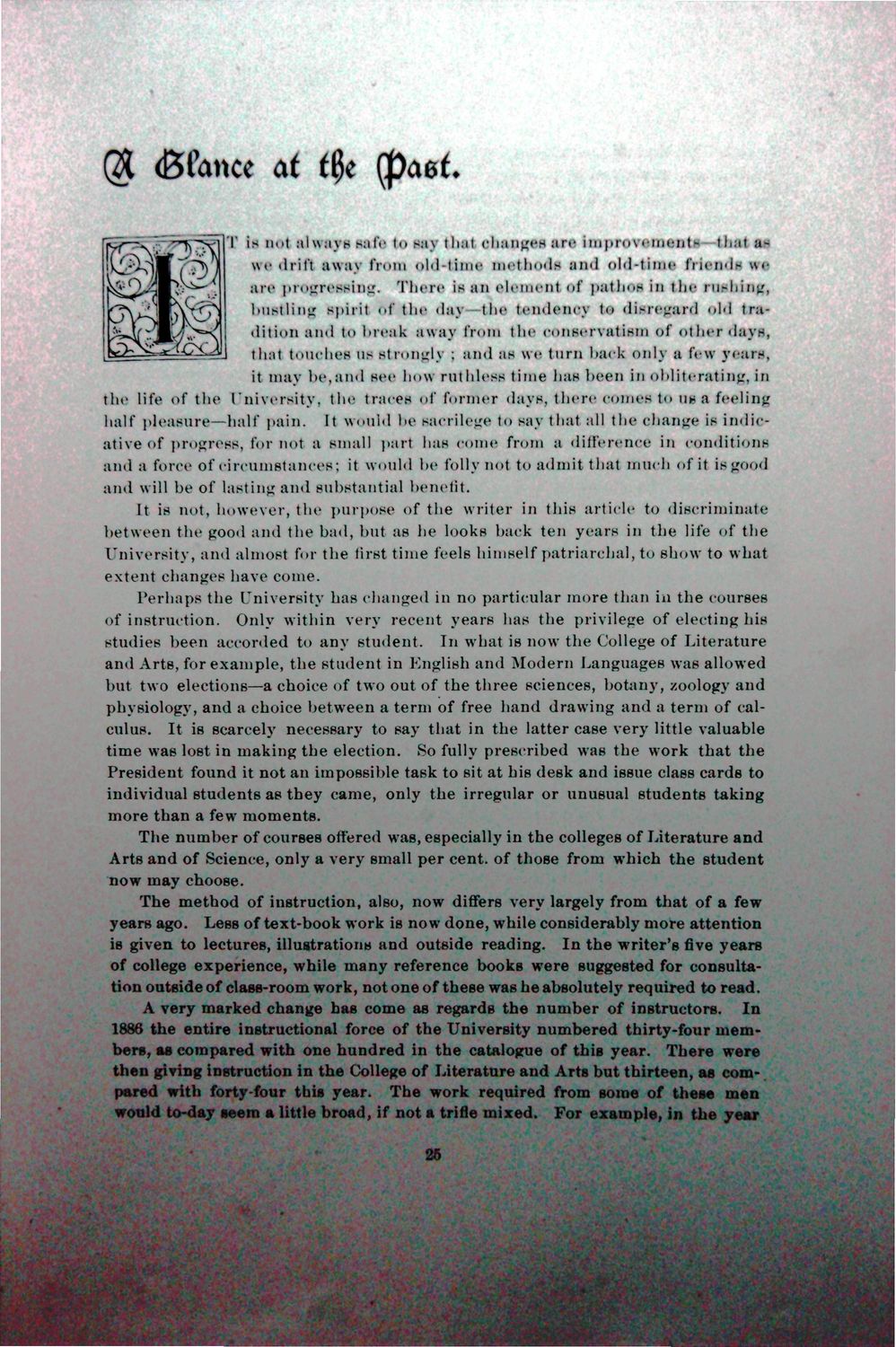| |
| |
Caption: Illio - 1896
This is a reduced-resolution page image for fast online browsing.

EXTRACTED TEXT FROM PAGE:
(Bfancc c (paet T is not always safe to say that changes are improvements that as we drift awav from old-time methods and old-time friends we k art progressing. There is an element of pathos in the rushing, untitling spirit of the day—the tendenev to disregard old tntdition and to break awav from the contiervatitiin of other days, that touches us strongly ; and as we turn hack only a few years, it may be,and see how ruthless time has been in obliterating, in the life of the University, the traces of former days, there comes to us a feeling half pleasure—half pain. It would be sacrilege to say that all the change is indicative of progress, for not a small pari has come from a difference in conditions and a force of circumstances; it would be folly not to admit that much of it is good and will be of lasting and substantial benefit. It is not, however, the purpose of the writer in this article to discriminate between the good and the bad, but as he looks back ten years in the life of the University, and almost for the first time feels himself patriarchal, to show to what extent changes have come. Perhaps the University has changed in no particular more than in the courses of instruction. Only within very recent years has the privilege of electing his studies been accorded to any student. In what is now the College of Literature and Arts, for example, t h e student in English and Modern Languages was allowed but two elections—a choice of two out of the three sciences, botany, zoology and physiology, and a choice between a term of free hand drawing and a term of calculus. It is scarcely necessary to say that in the latter case very little valuable time was lost in making t h e election. So fully prescribed was the work that t h e President found it not an impossible task to sit at his desk and issue class cards to individual students as they came, only the irregular or unusual students taking more than a few moments. The number of courses offered was, especially in the colleges of Literature and Arts and of Science, only a very small per cent, of those from which the student now may choose. The method of instruction, also, now differs very largely from that of a few years ago. Less of text-book work is now done, while considerably more attention is given to lectures, illustrations and outside reading. In the writer's five years of college experience, while many reference books were suggested for consultation outside of class-room work, not one of these was he absolutely required to read. A very marked change has come as regards the number of instructors. In 1886 the entire instructional force of the University numbered thirty-four members, as compared with one hundred in the catalogue of this year. There were then giving instruction in the College of Literature and Arts but thirteen, as compared with forty-four this year. The work required from some of these men would to-day seem a little broad, if not a trifle mixed. For example, in the year 26 »
| |